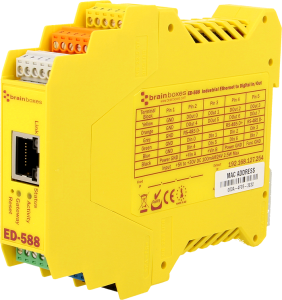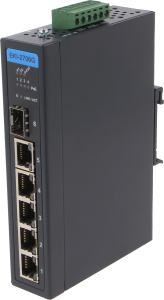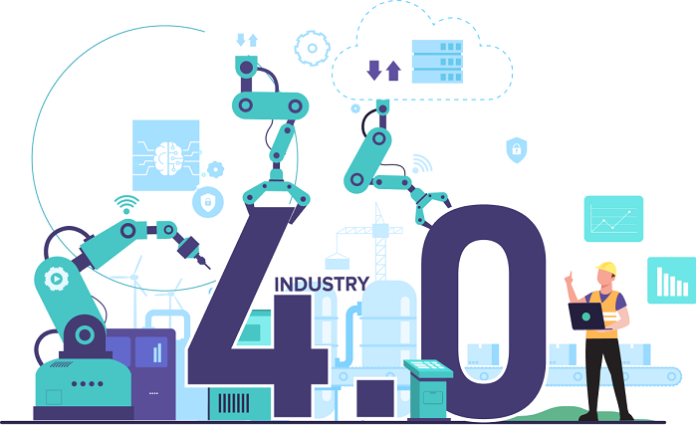All of us should now have a good grasp of what Industry 4.0 is about, and how it will be reliant on the acquisition and subsequent analysis of huge quantities of data. Through this, it will be possible to improve the production output of manufacturing facilities and raise product quality levels too. Access to data on the performance of equipment and its constituent parts, derived from distributed Industrial Internet of Things (IIoT) devices, will also benefit predictive maintenance. Consequently, the places where repair and component replacement are going to be necessary can be identified early on – before they cause a malfunction that interrupts the workflow and results in unwanted cost penalties being accrued.
The pervasiveness of industrial automation technology is set to gain heightened momentum in the years ahead. A report recently published by analyst firm Markets and Markets {1] predicts that the global IIoT business will rise from annual revenue of $77 billion in 2021 to $106 billion in 2026. This represents a 6.7% compound annual growth rate (CAGR) over that period of time.
Jupiter Research gives us some idea of the scale involved. It estimates that there will be a total of 36.8 billion IIoT nodes in operation by 2025 – which is more than double the figure that was operating in 2020. The data being generated by all these nodes would put a huge strain on network infrastructure if all of it had to be sent to the cloud, leading to considerable congestion. There are also the costs and power consumption relating to this to consider.
Changing computing strategy
Though cloud computing has proved to be a vital aspect of industrial automation, relying completely on this for all data management and storage activities will not be applicable in an increasing number of potential use cases – given the staggering quantities of data needing to be dealt with and the short timeframes that must be adhered to. It will instead be necessary for cloud computing to be complemented by locally situated processing resources.
A decentralised arrangement of this kind will mean that there are no latency issues to contend with, as processing will be carried out closer to the source of the data itself. It also means that bandwidth overheads can be significantly reduced, as a far smaller proportion of captured data will need to be transferred over to the cloud. Generally, it will only be the data that is concerned with the identification of long-term trends and suchlike as that needs to be sent back there. From this, it will be possible for processes to be improved in order to help boost productivity, reduce wastage and increase profit margins.
Placing processing at the edge
Industrial edge computing will allow decisions to be made within a shorter timeframe, with less risk of equipment getting damaged or staff being put in danger. The available bandwidth will not be used up, thereby keeping running costs and power budgets down. It will permit direct interfacing with the facility’s enterprise resource planning (ERP) so that operations can be more effectively managed and adapted to changing circumstances. Finally, by retaining most of the data handling locally, many of the potential security threats posed by malicious parties may be mitigated.
If this objective is to be achieved then highly reliable communication and processing hardware is needed. This hardware must leverage smarter technology than the programmable logic controllers (PLCs) that have traditionally been used. It must also be less bulky, offering intuitive operation, ease of integration, reconfigurability (to enable different prospective situations to be addressed) and greater interoperability (so that it can work with other items of installed hardware). Alongside these facets, it should have exceptional degrees of durability. Among the items called for will be communication cards that are compatible with the relevant legacy bus types (such as Modbus and Profibus), gateways to connect these with higher speed networks, lightweight panel computers, industrial modules, etc.
Key hardware characteristics
Given that factory floors will normally represent uncompromising working environments, selecting solutions that exhibit all the necessary robustness is of course essential. They need to have a proven ability to deal with shocks, vibrations, electromagnetic interference (EMI), voltage transients, extreme temperatures, dust and liquid ingress, etc. Likewise, straightforward implementation will be another important attribute. As Industry 4.0 requires all devices to be connected to the same network, the capacity to use this network for not just data transfer but also power delivery is clearly advantageous. Sourcing solutions that have built-in Power-over-Ethernet (PoE) capabilities included is therefore advisable.
Latest product examples
Remote monitoring & control for automated applications and processes – Brainboxes DIN rail mounted ED-588 Ethernet gateway offers robust and intelligent ‘control side’ devices that provide the interface to systems on the factory floor environment, commonly referred to as ‘process side’. It has 8 non-isolated digital input channels and 8 digital outputs. Featuring an 80MHz, 32-bit Arm processor, this gateway may be controlled over TCP/IP using the Modbus TCP protocol (or simple ASCII commands). It can be used for controlling AC and DC motors, pumps, fans, relay drivers, etc. An extensive array of application programming interfaces (APIs) are available (in C++, Javascript, etc.) to facilitate integration with popular software packages. The device can be configured and secured from a web browser and installed as a COM Port on a Windows PC to give complete backwards compatibility essential for legacy applications. With dimensions of 102mm x 128mm x 22.6mm, each ED-588 only takes up minimal cabinet space. These units can be attached to a 24V supply. They are housed in insulated polyamide casings which are IP20 rated. An operational temperature range of -30°C to +80°C is supported, and ambient relative humidity levels of up to 95% can be coped with. Short circuit and electrostatic discharge (ESD) protection functions are incorporated, as well as over-temperature shutdown.

Advantech’s EKI-2706G-1GFP industrial module has 4 Ethernet ports that are capable of 10/100/1000Mbit/s speeds. A 1Gbit/s Ethernet port is also accommodated. It can cope with 9kByte frame transmissions. The pair of LEDs on this module’s exterior indicates link status, transmission speed and collision status – so that troubleshooting can be conducted rapidly. With a maximum power consumption of 2W and supporting a total PoE power budget of up to 90W, it can be connected to a 24-48VDC industrial supply, and also supports PoE connectivity.

The EKI-2706G-1GFP module has 30mm x 140mm x 95mm dimensions and is contained within an IP30-rated metal housing. It has a DIN rail mounting, but can also be wall-mounted if preferred. Full compliance with IEC 60068-2-27 shock and IEC 60068-2-6 vibration testing procedures underlines its ruggedness, with a working temperature range covering -40°C to +85°C being supported. A mean time between failures (MTBF) of 1,697,086 hours assures ongoing reliable performance.
Conclusion
An exclusively cloud-oriented approach to industrial automation will evidently not be adequate when real-time responsiveness is mandated. What is needed is a combination of this with edge-based processing – as this will accelerate reaction rates and avoid traffic congestion, while also keeping down the associated operational costs. There is a wide range of different items of hardware that can be employed for this purpose and, by engaging with a distributor that has all the necessary experience in this area, the right solution for any given application criteria can successfully be sourced.
References
[1] https://www.marketsandmarkets.com/Market-Reports/industrial-internet-of-things-market-129733727.html
[2] https://www.juniperresearch.com/press/industrial-iot-iiot-connections-smart-factories

